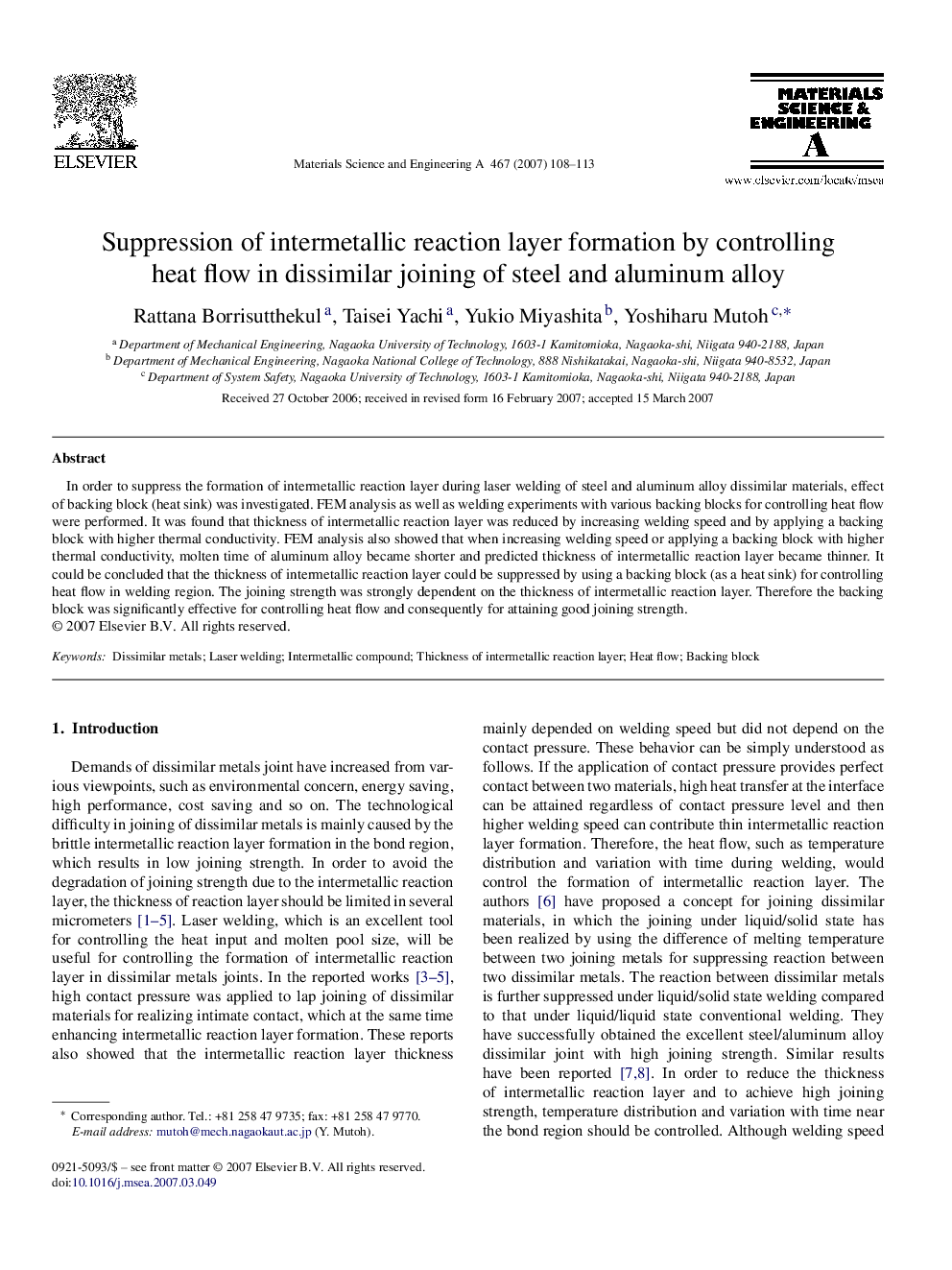| Article ID | Journal | Published Year | Pages | File Type |
|---|---|---|---|---|
| 1583470 | Materials Science and Engineering: A | 2007 | 6 Pages |
In order to suppress the formation of intermetallic reaction layer during laser welding of steel and aluminum alloy dissimilar materials, effect of backing block (heat sink) was investigated. FEM analysis as well as welding experiments with various backing blocks for controlling heat flow were performed. It was found that thickness of intermetallic reaction layer was reduced by increasing welding speed and by applying a backing block with higher thermal conductivity. FEM analysis also showed that when increasing welding speed or applying a backing block with higher thermal conductivity, molten time of aluminum alloy became shorter and predicted thickness of intermetallic reaction layer became thinner. It could be concluded that the thickness of intermetallic reaction layer could be suppressed by using a backing block (as a heat sink) for controlling heat flow in welding region. The joining strength was strongly dependent on the thickness of intermetallic reaction layer. Therefore the backing block was significantly effective for controlling heat flow and consequently for attaining good joining strength.
